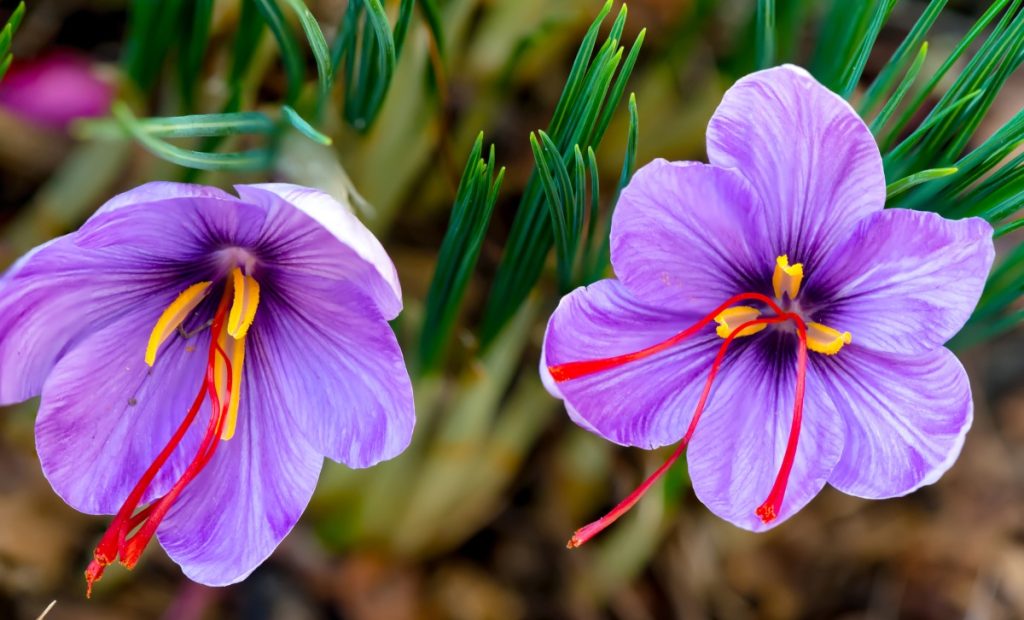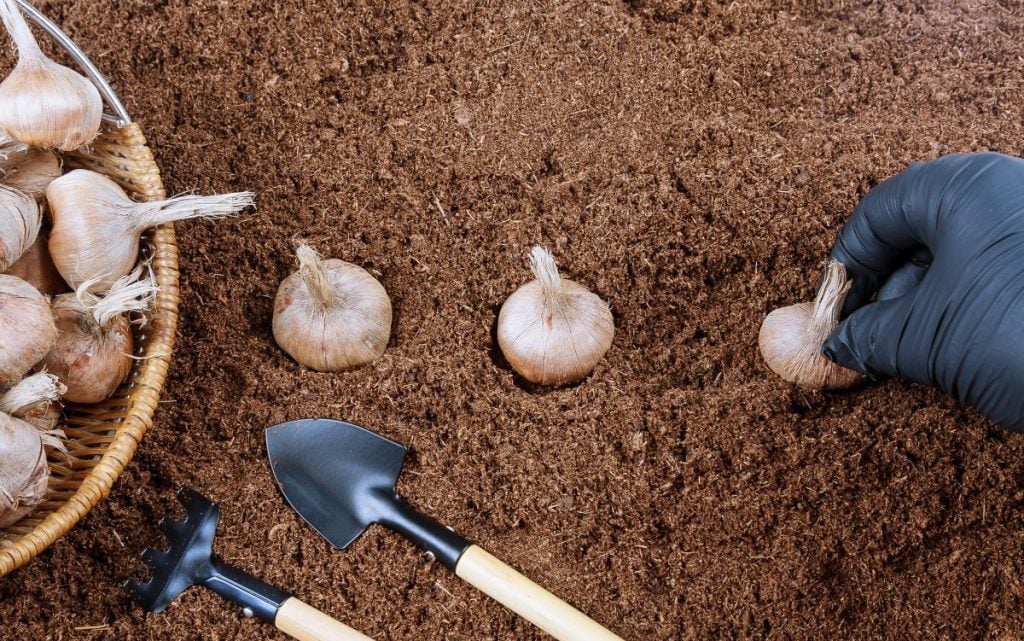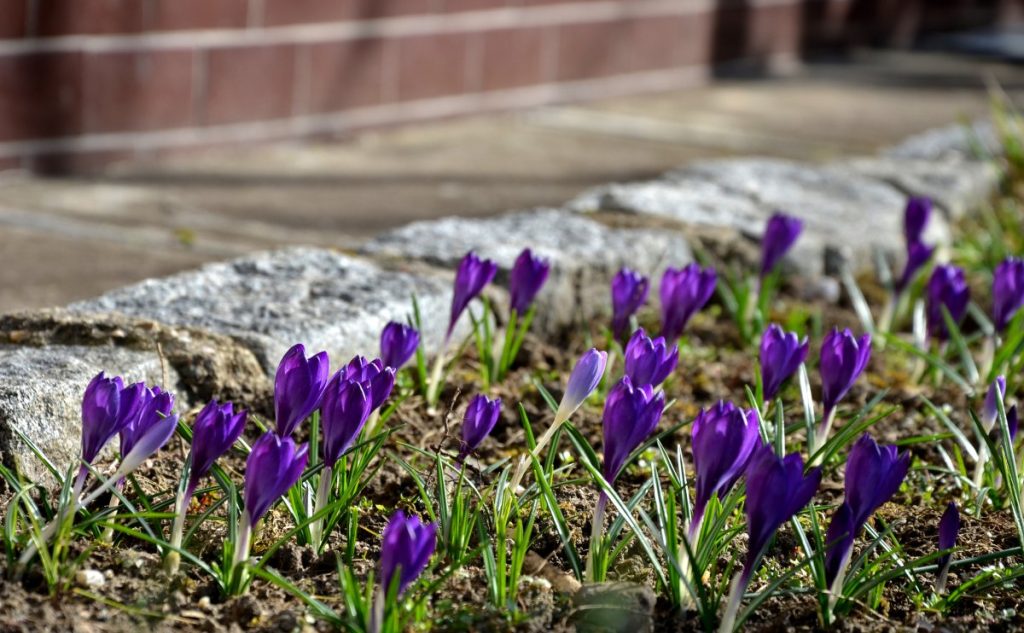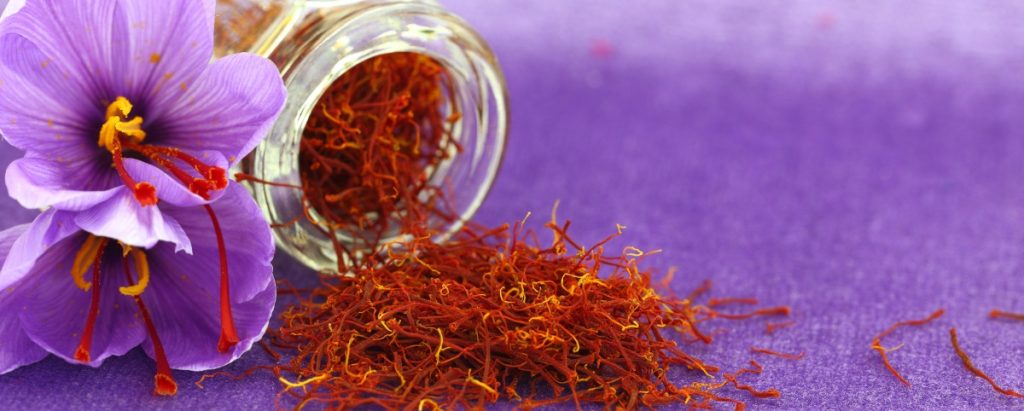Are you interested in growing saffron for a profit? Though it can be a challenging plant to grow, you’ll be rewarded for your efforts with a very high return on investment if you succeed.
Keep reading to learn about what saffron is, tips for growing it, the pros and cons of growing it, and a few ideas for how to sell it.
What is Saffron?
Let’s start with the basics. Saffron is a beautiful golden-yellow spice that has been used for centuries in cooking and as medicine.
It has an earthy, floral taste that lends complexity to many traditional rice and meat dishes, especially in Indian cuisine.
The crocus is a saffron flower that grows in the wild. Saffron threads are the dried stigmas of the crocus.
Saffron is also used as a dye and in printing. Though due to its price, most folks today use other materials to approximate saffron’s color.
This is because saffron sells for about $800 per pound in the grocery store in the United States.

Tips for Growing Saffron
Saffron is the most expensive spice in the world because cultivating it can be a laborious process.
Interestingly, it’s not the growing of the plant itself that’s so time-consuming, it’s the fact that you need to remove the saffron threads from each plant individually when it’s time to harvest them.
Still, with time and dedication, it’s possible to grow it yourself at home and turn a great profit.
To grow saffron, you need to live in a warm, dry climate where the saffron stigmas will be able to bloom.
Typically, people grow it in a garden, but a kitchen windowsill or greenhouse can also work. (Some folks even grow saffron using hydroponics.)
Growing saffron means keeping the plant healthy until the flowers open and release their pollen, at which point the flower dies. This takes a lot of patience!
However, if you follow these seasonal growing tips, you can grow your own saffron and reap the financial benefits.
Autumn
In the fall, plant your saffron corms in moist soil that is well-drained and has good fertility.
Corms should be about two inches (5cm) deep and two inches (5cm) apart, which allows room for the roots to develop and spread.
Cover the corms with a thin layer of soil.
Water the corms generously when you first plant them, then only water during periods when rainfall is scarce. Saffron can go up to two weeks without water.

Winter
During the winter, keep the saffron plants in a cold place with very little light, or cover the ground with mulch to conserve moisture and keep the soil cold. Continue to water sporadically.
Spring
Once the ground has thawed in the spring, dig up your plants and replant them in an area with full sun. The soil you plant them in should have a pH between 6 and 7.5.
Once the saffron crocus blooms in the spring, harvest the stigmas by picking the flower early in the morning or late in the evening to avoid the heat of the day.
The stigmas should be picked before the flowers fully open.
Cut off the stigma from each flower and dry them in a shady area until they are brittle and brown.
Then put them in a cloth bag and crush them into fine threads using a rolling pin or hammer and a hard surface.
You can store the threads in an airtight container until you’re ready to sell them.

Pros and Cons of Growing Saffron
Just like any other plant, growing saffron has its benefits and drawbacks.
Of course, the biggest benefit is saffron’s very high selling price, while its drawback is the work it takes to merit that price.
Here are a few other pros and cons to consider.
Pros
- Saffron is a versatile spice that can be used in many different recipes, which means it is (and will continue to be) in high demand.
- Saffron is high in antioxidants and can help reduce inflammation, so it continues to gain popularity as a medicinal plant.
- Saffron is an attractive plant that can be used to create stunning flower beds or to dye clothing that can be sold for a high profit.
- Saffron is one of the most lucrative crops you can grow.
Cons
- Saffron is a delicate spice and can be easily damaged, so you need to be mindful of how you handle and care for it.
- This plant requires a decent amount of space to grow.
- Saffron can be easily affected by wind as it grows so quickly and can be easily uprooted. The flowers are a very delicate part of the whole plant and can be damaged by even light breezes.
- Saffron’s light-colored pollen is not popular with insects, so it needs to be pollinated by hand.

How to Market and Sell Your Saffron
If you’ve managed to successfully grow saffron, congratulations! You’re well on your way to turning a profit.
You can sell saffron on its own, or you can turn it into a value-added product, like:
- Saffron salt
- Saffron dyed fabric
- Saffron tea
Here are a few ways to consider selling this special, golden plant.
1. Use social media to promote your saffron products.
Saffron is a popular spice, so using social media to promote your products can be effective.
Create a Facebook, Instagram and Twitter page for your spice business and share your latest saffron creations.
Don’t forget to include direct calls to action telling folks how to go about buying your products.
2. Hold sales events to promote your saffron products.
Farmers’ markets are an excellent venue to sell your saffron products, but you can also organize spice cooking classes or tastings to promote your saffron.
Make sure that people know your saffron products are for sale so that they can buy them on the spot.

3. Sell your saffron products online.
Set up a website to sell your saffron products. Upload photos and provide detailed information about your product. Include the price and shipping details for your online customers.
4. Attend culinary events to promote your saffron products.
You can attend cooking competitions, fairs and trade shows to promote your saffron. You can also offer free tastings of your saffron to attendees.
5. Submit your saffron products to online food magazines.
Submit your saffron products to online food magazines for review. This will help you to gain exposure for your products and attract new customers.
Final Thoughts
If you live in the correct climate to grow saffron and have the time and dedication required to grow it, you stand to make a lot of money.
The market for saffron is only growing and folks are willing to pay high prices for not only saffron threads, but for value-added products like saffron salts and tea.
If you’re interested in growing a plant for profit but would like to start with something less challenging than saffron, we recommend reading our article on growing bamboo for profit.
